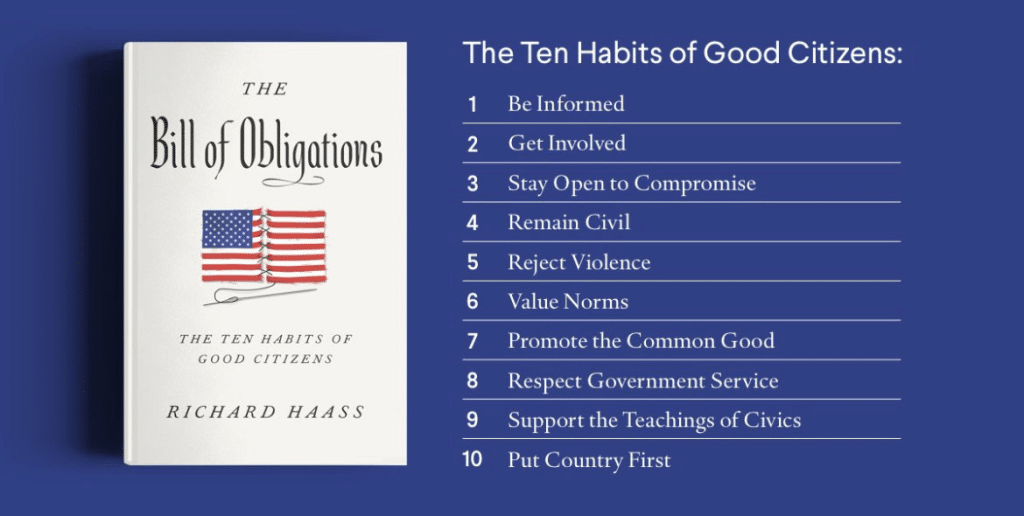Inside the NRA: A Tell-All Account of Corruption, Greed, and Paranoia within the Most Powerful Political Group in America, by Joshua L. Powell, former chief of staff to Wayne LaPierre and senior strategist for the National Rifle Association.
This book is a poorly executed attempt at contrition by the author for staying with the NRA for so long, apparently hoping to gain credibility by exposing the corruption and greed at the heart of the NRA’s managing elite. On the one hand Powell sings the praises of the original purpose of the NRA – to promote support for sportsmen, training, and gun safety – and then follows the radicalization of the leaders into a blind uncompromising support of the most extreme interpretation of the U.S. Constitution Bill of Rights’ Second Amendment and the use of fear to drive donations ,which are then used to punish politicians trying to reign in the worst attributes of our country’s gun culture.
Time and again the author, while lamenting this capture of the NRA’s good intentions by the few extremists who view the any compromise as the slipperiest of slopes down to gun confiscation, in the next breath goes full throttle on the sanctity of the Second Amendment, especially as interpreted by the ever more hard right Justices of the Supreme Court. But he doesn’t discuss, let alone admit, that the “original” Second Amendment was not an expression of individual “rights” but of the various States to arm militias.
At every turn – whether it is the right to own a gun, the right to buy an AR-15, the right to have a magazine with 30 or more bullet capacity, the right to openly carry – the author is in full-throated support of the most extreme position.
At the end of the book, where he had promised to address the issue of gun violence, he offered the opinion that the NRA can and should help by lending its unique expertise on all things gun related. In the penultimate chapter, “Searching for Answers”, he starts the “search” with a long treatise on changing the regime at the NRA, as if the problem is primarily related to its corrupt business practices, “And, of course, protect the Second Amendment from those who wish to dilute it or delete it.”
His second suggestion, which he considered radical for any NRA member to support, was a call to pass universal background checks, and prosecuting those who break the law. But then he quickly avers that background checks and closing gun show loopholes won’t really solve anything but should be passed so the issue can be “taken off the table.”
The third is his promotion of the “School Shield” safety program, whereby the NRA helps structure school hardening with its advice and knowledge of all things gun related. Assessing vulnerabilities and implementing the structural changes will cost money, “But aren’t our children worth it?” Essentially his position is that guns are inevitable, so the answer is to build armed fortresses for education rather than deal with the proliferation of weapons which, parenthetically, has been enthusiastically promoted with NRA fear mongering.
The fourth suggestion is essentially to put all the “bad guys” in jail, with hard sentences and hard time. The use of scary billboards in Richmond, Virginia, in 2007 cut its homicide rate down from 122 in 2006 to [only] 57 in 2007 (this may be proof of concept, or a result of unrelated factors, but is a good example of a misunderstanding of cause and effect.). “If we really want to clamp down on gun violence and gun-related homicides, we should be prosecuting to the full extent of the law the criminals who use guns in committing crimes.” He then goes on to state the NRA folks are law abiding
The fifth “answer” is to keep guns out of the hands of people who are at risk. He supports some “red flag” laws, but “with trepidation,” and then repeats the NRA slippery slope trope that the government would then come after everyone with a gun. He favors strict adherence to “due process,” but that begs the question of prompt action when a hazardous situation arises (see Lewiston, Maine for the most recent example). He insists on involving “both medical doctors and psychiatrists and some sort of bipartisan oversight, so that this is used sparingly and appropriately.”
Sixth, he advocates adopting the Israeli method of tracking terrorists, but then equivocates on actually doing anything about the results of red flags because of violating “individual rights.”
Seventh he advocates looking at real data about gun violence with a “bipartisan commission to gather accurate data about gun violence,” an effort sure to be demonized by the NRA. He does not, however, give any indication that such data would ever lead to any kind of action, either morally or legislatively.
Finally, in “Searching for Answers” Powell dismisses the notion of banning assault rifles, first by stating that the weapons aren’t the only ones used in mass murders, and their bullets are not the most deadly, and then citing the fact that they are used “in only 25 to 30 percent of mass shootings.” So let’s not address the fact that the weapons are easy to use and just as deadly as the alternatives. And the idea of reducing magazine size is ridiculed because it only takes a few seconds to replace a spent magazine. I suppose that during an attack the potential victims could just wait until the magazine is replaced to continue resisting. A “few seconds” could literally be the difference between life and death.
Finally he suggests that limiting the number of weapons anyone could own would inconvenience gun collectors and sportsmen who hunt a variety of species, and then “can’t imagine the Supreme Court would sign off on a restriction…on the number or kinds of models of guns that individuals can own.” His conclusion is that the Supreme Court would never go back on its previous decisions, stare decisis, which, of course they have done on a number of occasions (see Roe v. Wade).
He is convinced that the number of guns in circulation is an immutable fact of nature and cannot be questioned (or addressed). It would be informative to hear his response to the notion of treating a potentially lethal weapon – a gun – like another potentially lethal weapon – a car – by requiring: 1) annual registration fees for each weapon; 2) an operating license granted after passing an operating exam, with required periodic renewal; 3) liability insurance for damages and/or injuries caused by the weapon, regardless of who pulled the trigger. No threat to take guns away – just treat them like any possession that has the potential to cause harm.
His last statement in “Search For Answers” is
“…gun owners are among the most responsible and law-abiding citizens in our great country. Almost all of them would love to be a part of the solution to gun violence in America.”
This would be true if he and other law-abiding gun owners like him actually took that desire seriously instead of hiding behind platitudes and a false reading of the Second Amendment in the Bill of Rights.
Which brings us to Dr. Richard Haass’ new book The Bill of Obligations: The Ten Habits of Good Citizens.
Haass is an experienced diplomat and policymaker, having served in the Pentagon, State Department and White House under four presidents, Democrat and Republican.
The 10 articles of the Bill of Rights, the first 10 amendments to the U.S. Constitution, were intended to placate some Founders’ worries that too strong a federal government would threaten the rights of individuals and states. The focus of many, if not most, modern day Americans has been on the sanctity of these “rights” and the codification of them in laws. But the author of the Bill of Obligations posits that the glue which holds our democracy together is not the enumeration of laws for every conceivable circumstance of human behavior, but instead is the acceptance of non-legislated responsibilities, or obligations, which are necessary components of a civil society.

We cannot legislate, for example, that citizens stay informed, but it is, however, an unregulated duty, or “obligation,” to do so if we want the direction of our nation to stay true to its purpose. Voters – the most important component of our Democracy – need to know what they are voting for, and also have an obligation, again not legislatively mandated, to get involved, at the very least by voting.
The articles which follow are obligations for behavior – compromise, civility, anti-violence – which respect a variety of opinions without resorting to coercion. The value of norms – like accepting the results of elections and symbolic things like peacefully handing off the reins of government – function as a common understanding that we are all part of a greater whole which is at least as important as any of our cherished individual rights.
Promoting the Common Good should take precedence over self-promotion, especially for government officials. When this is not followed, the government itself becomes suspect. This then leads to ignoring the fact that the government is instituted to do things that are beyond the scope of what individuals can do for themselves, and the people who have chosen to be involved should be respected, not demonized. A knowledge of civil society and government is woefully lacking and should become a required component of education at all levels if we are to have an informed and effective citizenry. And finally, and perhaps most important to the survival of our democracy is to put country first – always before partisan politics, with the reading of JFK’s Profiles In Courage being a reminder of men and women who did just that. A contemporary example of this is Liz Cheney and her brave and selfless involvement in the Jan 6th investigation.
So the distinction between the two books is clear. Inside the NRA focused on an interpretation of the “right” to buy, carry, and use any weapon which could be classified as an “arm,” whereas The Bill of Obligations links individual rights with the rights and safety of others. The author of The Bill of Obligations paraphrases the 19th Century philosopher John Stuart Mill, in his treatise On Liberty, in what has become known as the Harm Principle, “individuals should be free to do what they want, even if it causes harm to themselves, but not if it causes harm to others.” This covers speed limits, smoking in public, vaccinations, and, arguably, gun proliferation, among a host of other things. The harm also even includes instances when the harm to the individual requires the expenditure of scarce resources by the many to treat the results.
When we as Americans hug our “rights” too close, we should bear this in mind.






